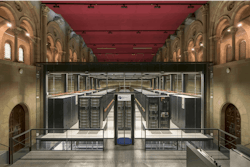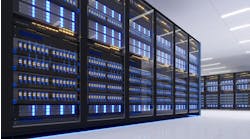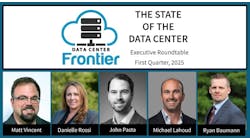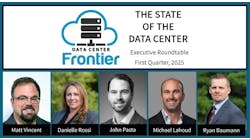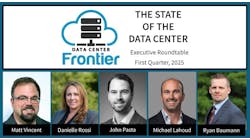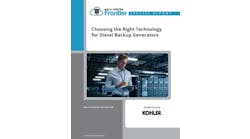Executive Roundtable: Mechanical and Electrical Infrastructure Strategies for Data Center Adaptive Reuse Sites
At Data Center Frontier, we always like to ask the experts -- in this case, the four distinguished industry leaders featured in our Executive Roundtable for the Third Quarter of 2024.
Today we begin by asking for our experts' views on the main considerations for the procurement and deployment of mechanical and electrical infrastructure in data center adaptive reuse projects and sites, versus for new construction. And as a corollary question, we ask: To what degree are supply chain concerns presently a factor in the data center sector?
In addition to today's discussion, in articles throughout the rest of this week and into next week, our panel of executive thought leaders will offer their observations on other topical industry considerations for the Third Quarter, including:
- The evolution of service level agreements (SLAs) for data center equipment and expansion projects in the age of rapidly escalating AI, HPC and cloud computing demand.
- Key project management strategies for facility operators and developers seeking to balance a need for great versatility with a mutual need for great specificity in data center designs for the AI era.
- The best path forward for innovation in data center infrastructure optimization, in terms of engineering for ongoing energy efficiency gains and maximum clean energy utilization in the face of AI's exponential power requirements.
Our Executive Roundtable for the Third Quarter of 2024 pulls together a panel of seasoned data center industry leaders including:
Danielle Rossi, Global Director – Mission Critical Cooling, Trane
Sean Farney, VP of Data Center Strategy for the Americas, JLL
Harry Handlin, U.S. Data Center Segment Leader, ABB
Josh Claman, CEO, Accelsius
Over the rest of this week and next week, we’ll moderate a Q&A with these experts on each of the four roundtable topics.
We begin today with our roundtable's takes on the main considerations for the procurement and deployment of mechanical and electrical infrastructure in data center adaptive reuse projects and sites.
Data Center Frontier: What are the main considerations for the procurement and deployment of mechanical and electrical infrastructure in data center adaptive reuse projects and sites, versus for new construction? And to what degree are supply chain concerns presently a factor?
Danielle Rossi, Trane: The recent increases and ongoing changes in density requirements are making existing site adjustments difficult.
The considerations include available site power, retrofit costs, and potential downtime versus new site development.
If we assume no additional power capacity to be added to a site and a company is looking to adjust an existing data center to liquid cooled or hybrid cooling, the likely retrofits will include increase of floor supports, additional piping/piping infrastructure, and will result in a smaller load footprint in a larger space.
If additional power capacity is assumed, the same retrofits will need to be done with the addition of increased power feeds and heat rejection at the location.
Additional power, power supporting equipment, and heat rejection are the longest lead time items in the industry, increasing time to deployment and, in this case, redeployment.
The above mentioned considerations result in the increase of product reuse in place of site reuse.
Depending on the existing facility, customers are now considering repurposing existing long-life items such as generators, chillers, transformers, and switchgear to new facilities from their existing locations.
Once that transition is made, the existing building can be retrofitted, or the land can be used for a new build, optimizing the customer's existing property.
Sean Farney, JLL: As someone who grew up in the construction trades, I know remodeling can be a lot trickier than a new build.
Adaptive reuse projects have more unknowns and require more experience.
However, a rigorous site selection process generally leaves you with good structural bones and (usually) robust mechanical and electric infrastructure, albeit dated.
With several phenomenal modular data center products available today, we are seeing many effective adaptive reuse projects where developers use these "good bones" sites to warehouse packaged data center modules.
Harry Handlin, ABB: Due to the lack of available power, adaptive reuse projects are increasing, especially reuse and repurpose of industrial sites where the utility infrastructure and available power exists.
These sites include, but are not limited to steel mills, power plants, aluminum plants, and paper mills.
The main considerations for deployment of data center infrastructure in these sites are design time, equipment footprint, and equipment lead times.
Josh Claman, Accelsius: We are now at a point where most data center operators understand that liquid cooling is the future. This leads to a lot of debate around how to make this transition in the most efficient way.
Let’s start with the simple math: as of December 2023, there are close to 11,000 data centers worldwide, nearly half of which reside in the United States.
Now, in the age of AI, regardless of how recently these data centers were built, most of them will need to be retrofitted with more modern and energy-efficient technology, and if they want to maintain operations, they’re going to need to be retrofitted fast.
The industry knows this. However, the common narrative is that liquid cooling can only be enabled in new builds. Retrofitting existing sites is going to be prohibitively expensive, much more so than constructing a new data center. It’s time to question this premise.
Consider the alternative. Consider the full cost of a new build—financial, sure, but also environmental.
The impact of concrete alone should give us pause when considering a greenfield project. Concrete represents up to 80% of a new data center’s embodied carbon emissions, and concrete itself annually represents 11% of total global emissions—more than the entirety of the EU’s carbon emissions.
With hyperscalers now backpedaling on their carbon-neutral goals, some even admitting their carbon emissions have risen substantially while pursuing AI, it’s time for the industry to radically innovate with an emphasis on sustainability—and it can start by focusing on existing infrastructure.
Yes, there may be stranded physical capacity, but retrofitting can be, in many cases, a more sustainable and practical answer than starting from scratch.
Of course, supply chain concerns are still a factor. We’re still hearing of very long lead times for almost all equipment involved in power conditioning and traditional air cooling as companies work through multi-year backlogs. This impacts both new builds and retrofits.
Next: Evolution of Data Center SLAs in the Age of AI

Matt Vincent
A B2B technology journalist and editor with more than two decades of experience, Matt Vincent is Editor in Chief of Data Center Frontier.

